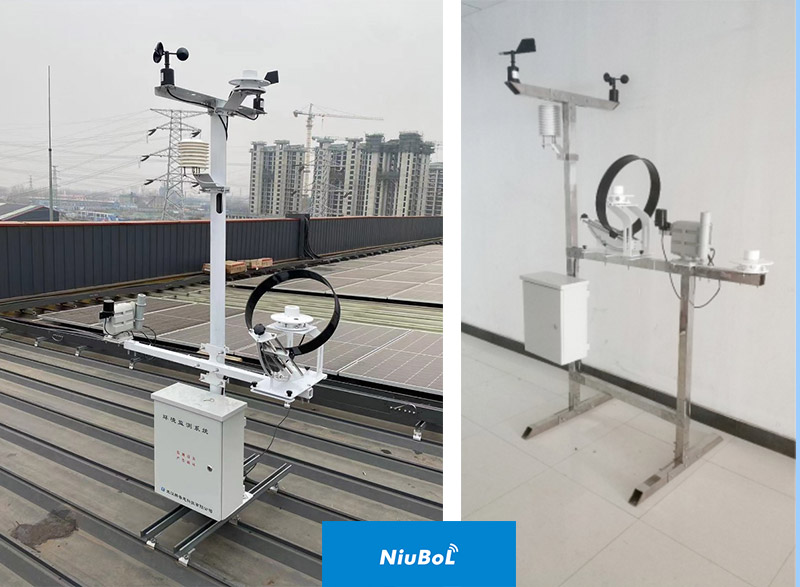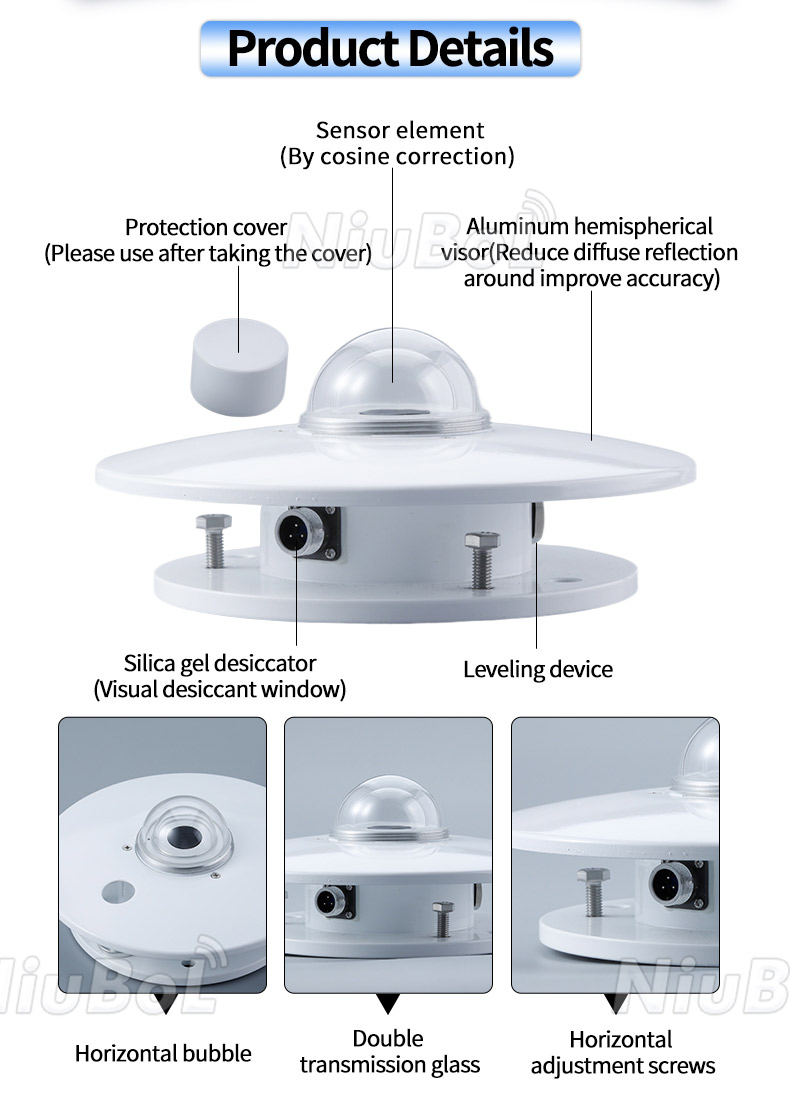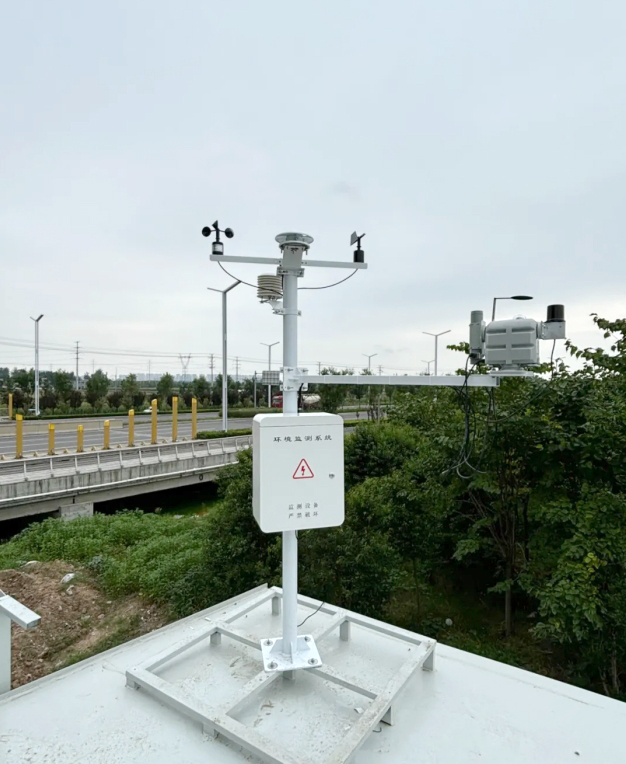

— Blogs —
—Products—
 Consumer hotline +8618073152920
Consumer hotline +8618073152920 WhatsApp:+8615367865107
Address:Room 102, District D, Houhu Industrial Park, Yuelu District, Changsha City, Hunan Province, China
Product knowledge
Time:2024-09-01 15:35:46 Popularity:422
Pyranometers (solar intensity meters) can be classified into a number of types depending on their design and application, specific needs and technical characteristics. Whilst it is not possible to give an exact number of types of pyranometers, as new models and types may emerge as technology develops, some of the main types of pyranometers are listed according to common classification criteria:
1. Standard Pyranometer: This type of pyranometer is designed to measure solar radiation accurately and is used as a standard device for calibrating other radiation measuring instruments.
2. Omni-directional Pyranometer (also known as GHI Pyranometer): This pyranometer is specifically designed to measure the total solar radiation received in a horizontal plane (Global Horizontal Influence, GHI), including both direct and scattered radiation. This type of pyranometer is essential in solar applications and meteorological monitoring.
3. Direct Normal Incidence Pyranometer (DNI Pyranometer): Designed to measure direct radiation (DNI), it is usually mounted on a sun tracker to keep the sensor always perpendicular to the sun's rays. This is especially important in concentrated solar electric systems and solar tracking applications.

4. Thermopile All-Sky Radiometer (Thermopile Pyranometer): uses the thermopile effect to measure solar radiation. The thermopile consists of a series of thermocouples connected in series. When solar radiation hits the thermopile, due to the uneven distribution of the radiant energy, a temperature difference potential is generated between the thermocouples, thus measuring the intensity of the radiation.
5. Spherical Pyranometer: A pyranometer with a spherical sensing surface, capable of receiving solar radiation from all directions in a more comprehensive manner, suitable for radiation measurements in complex environments.
6.Spectral total solar radiation meter / spectral all-sky radiometer (Spectral Pyranometer): can measure the intensity of solar radiation in different wavelength ranges, suitable for spectral analysis and scientific research.
7. Other special types: Depending on the needs of a particular application, there may also be other specially designed pyranometers, such as portable pyranometers, drone-mounted pyranometers, etc.

It should be noted that the types of pyranometers are not fixed and unchanging, with the continuous progress of technology and the continuous expansion of application areas, new types of pyranometers will continue to appear. Therefore, the types listed above only represent some of the current common types of pyranometer.
A thermopile, also known as a thermocouple or thermoelement, is a thermoelectric conversion device that operates based on the thermoelectric effect. The following is a detailed explanation of a thermopile:
Definition and Structure
A thermopile is made up of multiple pairs of thermocouples connected in series, each pair formed by welding together two metal (or semiconductor) wires of different materials. When these two materials are in contact and at different temperatures, a thermal potential, or potential difference, is generated. By connecting multiple pairs of thermocouples in series, a ‘thermopile’ can be formed, thus enhancing the thermoelectric conversion effect.

The operating principle of a thermopile is based on the Seebeck Effect, a thermoelectric effect. Specifically, when two different materials come into contact (junction) at different temperatures Tₕ and T, carriers (e.g., electrons or holes) move along the temperature gradient, generating a thermoelectric potential in the circuit. This thermoelectric potential is the thermopotential, and its magnitude and sign can be used to calculate the voltage or power output from the thermopile.
Overall, there are many different types of pyranometers, each with its own specific application scenarios and advantages. When choosing a pyranometer, comprehensive consideration needs to be made based on the specific measurement needs and application environment.
NBL-W-HPRS-Solar-Radiation-Sensor-Instruction-Manual-V3.0.pdf
Prev:Advantages of MQTT Weather Station
Next:What is the difference between solar radiation and irradiation?
Related recommendations
Sensors & Weather Stations Catalog
Agriculture Sensors and Weather Stations Catalog-NiuBoL.pdf
Weather Stations Catalog-NiuBoL.pdf
Related products
 Combined air temperature and relative humidity sensor
Combined air temperature and relative humidity sensor Soil Moisture Temperature sensor for irrigation
Soil Moisture Temperature sensor for irrigation Soil pH sensor RS485 soil Testing instrument soil ph meter for agriculture
Soil pH sensor RS485 soil Testing instrument soil ph meter for agriculture Wind Speed sensor Output Modbus/RS485/Analog/0-5V/4-20mA
Wind Speed sensor Output Modbus/RS485/Analog/0-5V/4-20mA Tipping bucket rain gauge for weather monitoring auto rainfall sensor RS485/Outdoor/stainless steel
Tipping bucket rain gauge for weather monitoring auto rainfall sensor RS485/Outdoor/stainless steel Pyranometer Solar Radiation Sensor 4-20mA/RS485
Pyranometer Solar Radiation Sensor 4-20mA/RS485
Screenshot, WhatsApp to identify the QR code
WhatsApp number:+8615367865107
(Click on WhatsApp to copy and add friends)